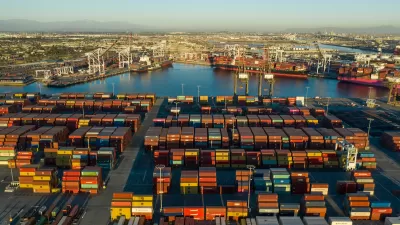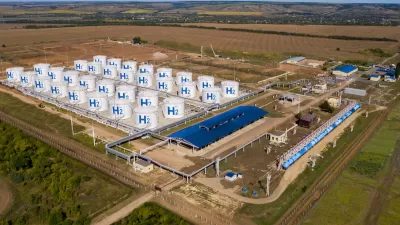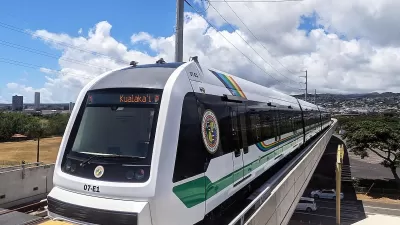As the cruise industry grows, being a port of call is an increasingly lucrative proposition. However, many cities are having a hard time balancing "the economic benefits of cruise ships against their cultural and environmental impact."
With the number of cruise passengers expected to increase by as much as 8 percent in the next year alone, Kim Severson uses Charleston as a case study to explore the dilemma that many of America's coastal cities are facing with how to balance being hospitable to cruise ships (and their customers) with concerns over environmental and cultural impacts.
In charming Charleston, "[t]he South Carolina Ports Authority wants to build a new ship terminal that port officials say will handle only one ship at a time, but the frequency of ships could increase," explains Severson. "Those dedicated to preserving a section of town whose buildings date to the 1700s worry that a new terminal will bring a damaging concentration of tourist traffic and larger cruise vessels."
"Port officials point out that cruise ships are a tiny slice of the city’s shipping traffic," she adds. "More than 1,700 vessels use the port every year, and only 85 of those are cruise ships. And cruise traffic, they say, is worth $37 million a year to the region."
"But this city takes its preservation seriously. The specter of more cruise ships has spawned three state and federal lawsuits and has placed the city’s historic district on the World Monuments Fund’s list of most endangered cultural sites."
FULL STORY: This Charleston Harbor Battle Is Over Cruise Ships

Alabama: Trump Terminates Settlements for Black Communities Harmed By Raw Sewage
Trump deemed the landmark civil rights agreement “illegal DEI and environmental justice policy.”

Study: Maui’s Plan to Convert Vacation Rentals to Long-Term Housing Could Cause Nearly $1 Billion Economic Loss
The plan would reduce visitor accommodation by 25% resulting in 1,900 jobs lost.

Planetizen Federal Action Tracker
A weekly monitor of how Trump’s orders and actions are impacting planners and planning in America.

Wind Energy on the Rise Despite Federal Policy Reversal
The Trump administration is revoking federal support for renewable energy, but demand for new projects continues unabated.

Passengers Flock to Caltrain After Electrification
The new electric trains are running faster and more reliably, leading to strong ridership growth on the Bay Area rail system.

Texas Churches Rally Behind ‘Yes in God’s Back Yard’ Legislation
Religious leaders want the state to reduce zoning regulations to streamline leasing church-owned land to housing developers.
Urban Design for Planners 1: Software Tools
This six-course series explores essential urban design concepts using open source software and equips planners with the tools they need to participate fully in the urban design process.
Planning for Universal Design
Learn the tools for implementing Universal Design in planning regulations.
Caltrans
Smith Gee Studio
Institute for Housing and Urban Development Studies (IHS)
City of Grandview
Harvard GSD Executive Education
Toledo-Lucas County Plan Commissions
Salt Lake City
NYU Wagner Graduate School of Public Service





























